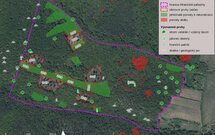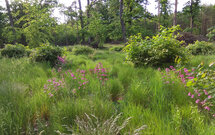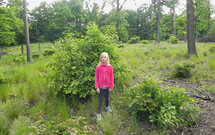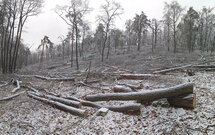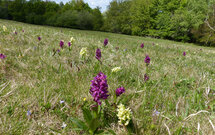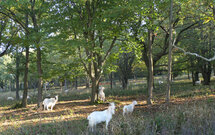Nature Conservation 4/2008 — 19. 8. 2008 — On Nature in the Czech Republic
The Javoříčko Caves
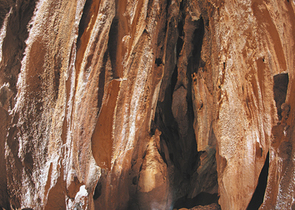
The Javoříčko Karst is a part of the Drahanská vrchovina Highlands in north-eastern Moravia, drained by the Špraněk and Javoříčka Brooks.
The area also includes the three-storey Javoříčko Caves, in total more than 4 km in the length. For the whole system, great vertical diversification and chimney abysses which connect the individual grounds are typical: 740 m have been accessible for the public as a show cave. The caves were discovered by Vilém Švec and his colleagues in 1937: consequently, they were open for the public one year later. In 1949, the cave administration staff members found a continuation on the middle storey: according to its main pattern, the part of the system is called the Clayey Caves. In the 1950s, a part of the caves from the Švec and Blessed Holes, entitled the Caves of Peace was discovered. In 1983, the 7-09 Estavela speleological group of the Czech Speleological Society begun to carry out its activities, aiming at the continuation of the Vojtěchov corridor. Removing the caved-in ground and shooting through a sintered wall, they reached caves approx. 300 m long, called the Olomouc Dome. At present, the Cave Administration of the Czech Republic staff members in collaboration with the Bruttopýr speleological group carry out surveys on the middle storey. Since 1969, the 7-03 Javoříčko speleo-logical group of the Czech Speleological Society has been involved in the Javoříčko Karst survey, focusing on searching for underground part of the Špraněk Brook. In the Javoříčko caves, the group found the continuation of the Clayey Caves. At the Za hájovnou Cave, they discovered the Birthday Corridor with rich stalactite ornaments in 2001. At present, paleontological research has been carried out there. The Javoříčko Caves are the greatest bat wintering site (hibernaculum) in the Czech Republic. In 2008, there were 3,321 individuals of the Lesser Horseshoe Bat (Rhinolophus hipposideros). Up to this time, 18 bat species have been found in the Javoříčko Caves. To effectively protect them, the Špraněk National Nature Reserve has been listed on the National List of the proposed Sites of European Importance, thus becoming a European Community Natura 2000 network site. The research and surveys have not been finished in the Javoříčko Caves yet. Nevertheless, a quarry at the Holý vrch/Bare Hill site is planned to be put into service: therefore, the whole Javoříčko Karst ecosystem could be threatened.
Název připojené galerie
Quisque egestas velit non nulla fermentum, aliquet pharetra nunc malesuada. Nullam molestie vel diam non tincidunt. Sed pulvinar lacinia nunc et consectetur. Duis varius leo ac ex scelerisque, ullamcorper eleifend massa consectetur. Nullam in metus ac arcu pellentesque venenatis ac id lorem. Nulla nec ipsum sed enim sodales blandit a sit amet ex.


